Streetcar Social
Gathering of notables tracks the route of proposed streetcar. And HGTV comes to town to film a straw-bale home.
More than 50 people gathered on a torrid Tuesday evening, September 10th, at the headquarters of Stone Creek Cafe, 422 N. 5th St. for an informal “Milwaukee Streetcar Social & Route Walk” led by City Engineer Jeff Polenske.
Stone Creek is but a stone’s throw from the glassy facade of the Milwaukee Intermodal Station; its 19th century industrial bulk is overshadowed by the elevated freeway that abuts it to the south. But it is there, under the freeway, in this wasteland of urban space, that our new streetcars will rest at night and be serviced and cleaned.
“We will be able to store three to four vehicles there initially,” Polenske told the crowd, while pointing to the abyss next door. An additional facility, or perhaps an addition to the facility will be needed to house future cars for the proposed and yet-unfunded route extensions.
This is the perfect location for a maintenance facility, said Dan Casanova of the Department of City Development, who added that his department has determined that “more and more people are coming to Milwaukee without a car.” Many of them are arriving by train, just a block away, so why not whisk them aboard the streetcar right at the station?
With the location of the train shed established, Polenske led the group on the streetcar’s route, which is to say, they headed east from the Intermodal Station directly toward the Milwaukee River, where the bridge had been taken out of service just days earlier for the St. Paul Vertical Lift Bridge Reconstruction project, set to run until June, 2014.
The tourists took the recommended detour over the river using the Clybourn bridge and made their first stop on the “Social” part of the walk at Thief Wine Shop & Bar at the Milwaukee Public Market, 400 N. Water St. Like the proposed streetcar shed, the public market was built alongside the elevated freeway on otherwise wasted land, and it has certainly enlivened the Historic Third Ward since its dedication in October, 2005.
The southbound streetcar will bend the corner by the market, working its way down N. Broadway, but it will head northbound at N. Milwaukee St. as did the walkers, some fortified with wine.
Next stop was the Zen on Seven atop the Hotel Metro, 411 E. Mason St., which offered a rooftop view of the city in a leisurely setting. There, former Common Council aide Alex Runner, who had joined our group, announced that he would be leaving Northwestern Mutual after just a couple of years to take a new job at Johnson Controls, also downtown.
Lobbyist Gary R. Goyke, who represents pro-rail groups like All Aboard Wisconsin and Wisconsin Urban and Rail Transit Association, also visited with the streetcar supporters who included Ian Abston of NEWaukee. Guests dined on various hot and cold appetizers in the lounge. Most were average, interested citizens, judging from their small talk and social interactions. One outlier was a man in a red sweatshirt who made many, many comments about many, many subjects. These included the streetcar, which apparently he is agin’.
Kris Martinsek and Jeff Bentoff, consultants working on the streetcar project, handed out a map of the route and discussed the origins of the project dating back to the Mayor’s first proposal in 2006 through the current final engineering process.
Much of the extraordinary opposition to seemingly any form of public transit in Milwaukee stems from the local AM talk radio hosts. Other cities faced similar opposition, and their radio talkers found other things to complain about when those cities opened successful streetcar lines.
The rail situation today reminded Martinsek of the battles she underwent to get approval for Mayor John Norquist’s Riverwalk initiative.
“That was a long battle,” she reminisced. “People would say, ‘who is going to want to spend $45,000 on a condo on the river?”
Finally, the event was over — except for the unusual man in the red shirt, who asked the receptionist at the Hotel Metro, “could you tell me how to get to the Amtrak station?”
Odd, indeed, since he had just walked the route.
HGTV to Feature Urban Milwaukee Home
A crew from cable network HGTV was in town on Tuesday, September 10th to film an urban Milwaukee home for an upcoming 3-½ minute episode of its series, “You Live in What?” to be presented sometime during its third season.
Viewers are still on year two of the show, which has covered unusual residences nationwide including a lighthouse, brothel, train, cemetery [not that unusual, in fact], sugar mill and dumpster.
The Milwaukee home will introduce viewers to the straw bale residence of Julilly Kohler, located on the banks of the Milwaukee River at the Kane Commons development that occupied her for much of the last decade.
Producer Sean Whitley traveled from Dallas, where he is based, to a few locations in the Dairy State, including Milwaukee, where his stops included the Bronze Fonz, which he said on Facebook is “kinda creepy-looking.”
So the man has good taste, which is surely helpful in his job of entering people’s homes with the purpose of documenting their unusual characteristics and owners. The Kohler residence had a couple of features that apparently enchanted him, includingleftover bales of hay from the home’s 2008 construction. Whitley and his three-man crew spent a number of hours climbing through the home, including a foray up to the green roof of the building, a place I have felt no urge to explore. I’ll wait until I see it on TV.
Film Fever Strikes Town
Heather Aldrich, the Development and Marketing Director of Running Rebels, took a lunch break on Tuesday, September 10th to give some friend-to-friend advice to her good buddy and fellow-redhead Mary Freeman.
The pair gathered at Elsa’s on the Park, 833 N. Jefferson St. The spot, which has long defined urbanity in Milwaukee, is owned by Freeman’s boyfriend Karl Kopp.
Freeman is working on a documentary called “Zorba the Buddha,” she says. In it she calls for “the immediate legalization of cannabis,” reasoning that the anti-marijuana laws are causing disruption in the urban Milwaukee society and economy. “Black youth are singled out, especially” she said, adding that marijuana could prove to be a good cash crop here. We’ll see if she gets any attention during the upcoming 5th annual Milwaukee Film Festival.
Freeman’s message may have a political resonance in New York City, where Bill de Blasio took a surprise lead in the mayoral primary race there. He campaigned on a platform opposing the police department’s stop-and-frisk policies that have ensnared many — particularly minority male youths.
Aldrich said her interest in the matter is strictly personal, and has no bearing on her day-to-day duties.
Former Milwaukeean to Head NYC Museum
Dr. Glenn Adamson, the curator of Milwaukee’s Chipstone Foundation from 2000-2005, was named Director of the Museum of Art and Design in New York on September 4th. He will begin his duties there in October, after resettling from London where he has been heading the research department of the Victoria and Albert Museum.
Adamson, while in Milwaukee, was also an adjunct curator at the Milwaukee Art Museum, where he worked on a number of projects including the award-winning Industrial Strength Design: How Brooks Stevens Shaped Your World (2003). … Toby Kamps, a Milwaukeean by birth, has been the curator of modern art at the Menil Collection in Houston since 2010, but he still visits Milwaukee from time to time. His father, Charles Q. Kamps, is a retired partner at Quarles and Brady law firm. Care to guess what the “Q” in his middle name stands for? It is a small town, indeed, ain’a?
Scene on the Street
The reopening of the Pleasant Street bridge is welcome for urban Milwaukeeans, and should be a boon for two apartment buildings soon to open east of the bridge. Avante Apartments, at the northwest corner of N. Jackson and E. Pleasant streets, looks nearly ready for occupancy, while the East Terrace Apartments at 1530 N. Jackson St. is not far behind. Across from Avante, a gut-rehab is taking place at 1608 N. Jackson St. It is one of a number similar projects happening in the vicinity of the new developments.
“Gut Rehab” projects involve the complete reconstruction of a building, most often a frame duplex or single-family home, of which there is an abundance in this city. These are among the most expensive remodelings to undertake, but unlike the patch-and-repair method of incremental changes, these are much more substantial — and beneficial for the community. You don’t go through the expense of replacing all walls, floors, ceilings, plumbing and electricity just to rent the place out for keg parties, let’s put it that way.
Other similar projects underway in the immediate vicinity include a two-family residence under new ownership at the southeast corner of E. Pleasant and N. Cass streets, a single-family home in the 900 block of E. Kewaunee St., and another 19th century home in the 800 block of E. Kewaunee St. [In case the address does not ring a bell, Kewaunee Street, one of the oldest in the city, lies one block south of E. Brady Street and runs just four blocks, spanning N. Cass St. and N. Humboldt Blvd. Another project is underway in the 1100 block of E. Kane Pl.
Correction: The story originally indicated Karl Kopp was involved in the making of movie “Zorba the Buddha,” this was incorrect he is not involved in the film.
More about the Milwaukee Streetcar
For more project details, including the project timeline, financing, route and possible extensions, see our extensive past coverage.
- Another Streetcar Collision - Jeramey Jannene - Jun 27th, 2025
- Streetcar Hit By Apparent Red Light Runner - Jeramey Jannene - Jun 16th, 2025
- Streetcar Will Run On Consolidated Route During Summerfest - Jeramey Jannene - Jun 11th, 2025
- City Hall: Milwaukee Must Replace Failing Streetcar Switches - Jeramey Jannene - Feb 24th, 2025
- Streetcar Confronts Limited Funding, Operations Challenges - Evan Casey - Jan 22nd, 2025
- Council Kills Streetcar’s ‘Festivals Line’ - Jeramey Jannene - Jul 31st, 2024
- Streetcar Will Use Festivals-Oriented Route Through Summer - Jeramey Jannene - Jul 9th, 2024
- The Hop’s Lines Will Merge For Easier Summerfest Service - Jeramey Jannene - May 30th, 2024
- Streetcar Begins Daily Service To The Couture, BRT Will Soon Follow - Jeramey Jannene - Apr 11th, 2024
- Milwaukee’s Three Streetcar Extensions Need Mayoral Direction - Jeramey Jannene - Nov 8th, 2023
Read more about Milwaukee Streetcar here
Plenty of Horne
-
Villa Terrace Will Host 100 Events For 100th Anniversary, Charts Vision For Future
 Apr 6th, 2024 by Michael Horne
Apr 6th, 2024 by Michael Horne
-
Notables Attend City Birthday Party
 Jan 27th, 2024 by Michael Horne
Jan 27th, 2024 by Michael Horne
-
Will There Be a City Attorney Race?
 Nov 21st, 2023 by Michael Horne
Nov 21st, 2023 by Michael Horne


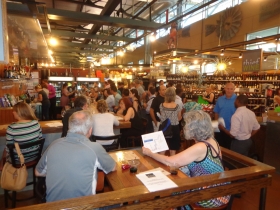
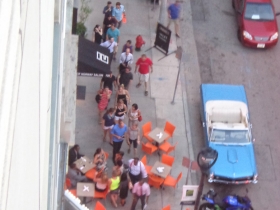
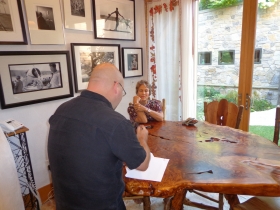
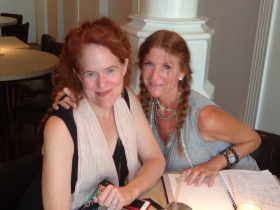
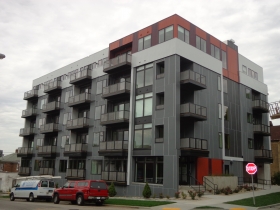
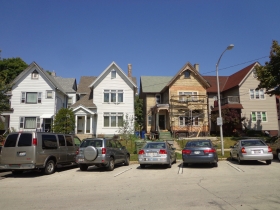



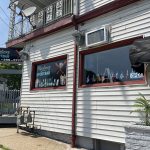














Perhaps you can elaborate on where the cities are that have successful streetcars lines?
Hey Dave, Have you heard of “The Google” ?
Pretty much every city that has a streetcar line.
This is craziness! You folks can’t rush fast enough to spend that “free” federal money (which is NOT free), yet every one of you knows that this would be seen as complete folly and the silliest of priorities if we had to spend local money to design and build it. PLEASE explain to me WHY it is AT ALL a bad idea to spend just $300,000-$00,000 (which is a lot of money) on a two year test project in which we lease the most modern, cool-looking rubber-tire buses, paint or wrap them in “cannot miss it” colors and graphics, run them on the very same routes at the very same times, and SEE IF ENOUGH PEOPLE RIDE IT TO HAVE IT MAKE ANY SENSE AT ALL? Can any of you explain to your fellow citizens why and how that does NOT make more sense than what you’re pushing and how you’re doing it? Is it so objectionable to you to be asked to approach this responsibly, with some common sense, and with some intelligence???
@Andy “rush fast enough.” Funny the money was allocated to a rail project in Milwaukee in 1991.. And this version of the project has been around since May 5th, of 2010. I’d hardly call that a rush…
And why would I compare apples and oranges? When we have actual examples in Portland and Seattle (as well as numerous cities around the world).
Answer the questions, Dave. Attempting to change the focus/change the subject conveniently leaves every one of my very reasonable and logical questions completely unaddressed. Nice try.
Change the subject? I was simply pointing your first statement was on its face incorrect. But to answer you question, again, it is not a good comparison Andy and I believe you know that. Instead of making an apples to oranges comparison as you propose I can point to a system or more (Portland / Seattle) that are actually similar (in more ways than a bus is) and show the ridership and the development that comes with it.
I’m not a fan of the proposed streetcar, but even I have to admit that this isn’t a rush job. It seems like this issue has been dragging on forever. My concern is that there is a disconnect when you talk about service and price of this project. If you talk service, everyone seems to admit that the second and future phases are key to making the streetcar viable. But if you talk price, they insist that it’s all free money (assuming no cost overruns, no cost to relocate utilities, and only phase 1 since phase 2 doesn’t have funding yet). If you can’t find money for phase 2, and the streetcar sits with only phase 1 for any length of time, you’ll need to hire people to ride it all the time just to quiet the AM stations. A source of funding needs to be found to allow phase 2 to start quickly after the conclusion of phase 1, if not before.
There is a very similar effort underway in St. Louis to put in a trolley/street car to connect an entertainment district known as the Delmar Loop near Washington University in University City to a large urban park known as Forest Park, where the Missouri History Museum and other attractions are located. The level of controversy and resistance here is also very similar to that in Milwaukee.
http://www.stltoday.com/news/local/metro/loop-trolley-project-at-risk-of-losing-million-in-federal/article_9e05e275-dab7-5401-a8e9-ccb703149f12.html
I don’t listen to the local talk hosts but highly doubt if they are as hard hitting as those in Milwaukee. The proposed system here is to be located nowhere near the downtown and hence is not in my neighborhood to add or detract from it. I have no opinion of it, really, but note that some of the attractions to be served by it are already handled by light rail, so I can see why some might think it stupid. Milwaukee has nothing other than the buses for public transit, and a better case for installing such a system may actually be able to made there.
To those calling for the use of rubber-tire buses, a quick (~3 seconds or so) internet search will take you to the Milwaukee Streetcar website, where the very first reason listed for doing the project is to “Spur significant ECONOMIC DEVELOPMENT because the infrastructure created by a fixed route provides a framework for making investment decisions, as experienced in every city that has built a streetcar system.” How do you test the effects of a fixed route using rubber-tire buses?
@ TJ –
If it’s about spurring ECONOMIC DEVELOPMENT, then why not build a streetcar line in the inner city area? I believe that area needs the most ECONOMIC DEVELOPMENT.
Frank, I think the planned downtown location of the streetcar is related to the number of businesses and cultural attractions in that area — I don’t think the concept is as viable in an economically devastated inner city area. I guess I see the streetcar as more of a novelty/nicety/tourist attraction, not that it doesn’t have some practical use, as well. I see the proposed system in St. Louis very similarly.
I was using the Metrolink light rail system yesterday and was trying to estimate the percentage of minority riders. I’m guessing that it is something like 70 – 80%, and this is a major part of the value in a system like this, in facilitating travel in the metro area for those who don’t have a car, most importantly, helping those individuals get to their jobs. I know buses perform the same function and are arguably more versatile in being able to go practically anywhere there is a paved road, but from my perspective, they just aren’t as cool to ride as the trains or as a streetcar would be, and there is admittedly something to this idea of a fixed route adding some structure to the local public transportation system. So I can understand much of the reasoning behind the streetcar idea. However, the people still living in Milwaukee will need to make the final decision as to whether it is really a good idea or not. I think there are good arguments that can be made both for and against it.
Dammit!
The goon squad is getting close to yet another victory guys… sadly we’ve got to become aware of this. THe loss of federal funds to keep the streetcar moving beyond the insufficient starter line is a huge, huge problem. We need a backup plan amigos!!!
@Tyrell To be clear we lost nothing. We simply did not get a TIGER grant (a program that had $14.1 billion in requests but only $474 million in funds), and it appears there will be another round of TIGER next year. And there other methods to get those funds… One thing at a time.
Like I said, if you can’t get phase 2 started as soon as phase 1 is complete, it’s going to look like a serious waste of money. You’ll never get to the 70% minority ridership Todd was talking about if you can’t get out of East Town.
Andy Smith (post #4), you suggest measuring streetcar demand by just running buses on the same route and schedule as the streetcar. But what kind of bus stops would you provide?
While most MCTS bus stops are just a “sign on a pole,” each streetcar stop will have a lighted shelter with a bench, an electronic “vehicle arrival information” display, a back-lit map, and a streetcar ticket vending machine (accepting cash, MasterCard, and Visa). Besides keeping waiting passengers out of the rain, the lighted shelter makes people feel more secure at night and clearly identifies the stations, even from a distance. (Have you ever tried to locate a “sign on a pole” bus stop from a block or two away at night?)
The “vehicle arrival information” displays are key to persuading visitors to try the streetcar. While they simply say something like “Next streetcar arrives in 4 minutes” (with the number clicking down about every 60 seconds based on the next streetcar’s actual location), they show that the wait is brief (or warn if it isn’t) and definitively communicate that the streetcar is actually running (unlike today’s rubber-tire “trolley” which only operates on selected days).
So, Andy Smith, what would bus stops be like in the trial you proposed? If they are just the cheap “sign on a pole” variety, how can we accurately gauge streetcar ridership? And if we go whole hog and install lighted shelters (a la the streetcar), what will it cost and who will pay for it?
The cost of the lighted shelters is included in the streetcar construction budget (one of the reasons the per-mile cost is so high), but that federal money would be unavailable if Milwaukee built them without the streetcar itself. (There are 40 stops on the full 3.5-mile streetcar line with 22 of those on the initial 2.1 miles.)
We are possible past the peak oil production stage on the planet and the cost of energy will continue to rise over time. China and India with larger middle classes than the USA will determine oil prices on the planet. By 2030, it is estimated that Saudi Arabia, current #1 exporter on the planet, will no longer have export potential and will need all their oil for a growing population and domestic consumption.
More citizens are now priced out of the car market. We are a nation in contraction and with any new job creation, they come with labor rates mostly in the service sector at just over $7 an hour. This wage does not support a car. The USA has shed millions of manufacturing jobs since the 1970s and they are not likely to return. So do we plan and build cities and roads for a portion of the population and ignore the rest of the citizens? Government’s role is to plan, promote, and provide efficient services for all classes of citizens and business and multiple transportation modes to meet future needs. This will aide in business attraction and development.
Modern and thoughtful cities need an all modes transportation system with public transit and efficient vehicles and trucks. All you have to do is visit cities like Chicago, Portland, Denver, Atlanta, San Francisco, San Diego, Portland to see public transit in operation. Development always follows the transportation corridors. This has happened for thousands of years from, walking, boats, carts, trains, trucking to aircraft, etc..
A recent example from the 1800s, Chicago bypassed Milwaukee in size and businesses when railroads located there. Obviously geography played a role. Until that time, Milwaukee and Green Bay were larger and dependent on shipping via water. Failure to address all transportation needs will result in the ongoing continued decline of the region.
Seems like no one remembers that not so very long ago (1950s … 60s?), this city was criss crossed with street cars on rails and trolleys with overhead wires. They went to the suburbs and all over the city. So does anyone know the REAL reason they disappeared? To clear the streets for cars? Whadda waste!
Older transit – some were repetitive systems on track, electric, and diesel buses in the urban setup. The interurban systems were bought up across the country and shut down. The Wisconsin Electric owned interurban electric system was bought and shut down in 1951. The old North Shore line that ran from Milwaukee to Chicago (electric) was shut down in 1964 when freeways and more cars were constructed. There were 120 million people in the USA in 1950, 330 million today and many more cars on the road. Trucks (on freeways) and airplanes have replaced many of the roles of rail although rail still hauls the most tonnage.
Freight rail is also arguably the only transportation form that is not government subsidized to any meaningful degree. Even freight aboard ships and barges is subsidized to some extent by municipal investments in ports, as well as the federal lock and dam system on inland rivers. Airports are run by municipalities and rely on the federal government for traffic control and for security checks on passenger flights. Road construction and maintenance are not completely supported by taxes, fees, and tolls, and are also effectively subsized by government, as are public transit systems and Amtrak. Freight railroads are pretty much on their own in covering the entire costs of their systems, while carrying freight at a remarkably low cost (only ship/barge is cheaper).
In regard to government subsidized transportation, if anyone’s interested, here is a link to the front page story from the St. Louis Post-Dispatch today on an Army Corps of Engineering debacle on the Ohio River that has ballooned in cost to $3.1 billion and shows no sign of getting done anytime soon. Funds have been drained from the Inland Water Trust such that planned lock and dam upgrades at other points on the Mississippi River have been pushed back to as far as 2070 in one case and 2090 in another.
http://www.stltoday.com/news/local/govt-and-politics/political-fix/illinois-dam-costing-billions-more-than-expected-as-delays-mount/article_3eb26385-6083-5004-8d74-75a174b7ba0b.html
Transportation systems have been subsidized as long as organized humans have been around. Think of Roman roads that are still in existence today, so-called free land in the USA that was taken from Native Americans and an alternating free square mile to railroads during the 1800s, homestead acts for farms, oil rights, logging, etc. All dependent on a transportation system. The British built their war fleets of the 1700 to 1800s from American Oak Trees. Everything has a subsidy and a consequence.
I had forgotten about the land originally offered to railroads as an incentive to build track. The attitude I see among some number of automobile drivers is an unwillingness to fund public transit type projects. Many rationalize this by saying automobile use supports itself through taxes and fees, but the reality is that those funding sources come nowhere close to supporting all of the road and bridge construction in the United States, let alone the maintenance and repair/replacement costs of all the assorted bits of that infrastructure.
There were a lot of people complaining about the expense of moving utilities for the street car. Has anyone seen the utility moving project at the Zoo interchange? I don’t hear any complaints about having to pay for moving massive high tension power lines.
I have no problem subsidizing mass transit . . . all forms– buses, trains, ports, marinas, airports, streets, highways, freeways. In fact, if any of you listened to my WTMJ talk show that I used to do on the weekends, you know that I have expressed support for a 1% increase in the sales tax with proceeds dedicated to transit funding. Also, I have expressed support for another 1% increase in the sales tax in the six S.E. Wisconsin Counties of Ozaukee, Washington, Waukesha, Racine, Kenosha and Milwaukee. Proceeds would initially be dedicated to a new Bucks Arena and convention center expansion, which I feel are vital, after which the proceeds would pay on a continuing basis for enhancing and improving our Quality of Life– as Oklahoma City has accomplished– park, art and entertainment and park venues in each of those counties. Now that’s QUITE a commitment for a conservative to make. That’s why it is SO infuriating to have liberals support such a folly as the two mile, “permanent” fixed route rail trolley that will go NOwhere important, and that has so many other sound arguments against it. And to compare the silly, irresponsible and incredibly expensive relocation of utilities downtown for this boondoggle, to the timely replacement and modernization of the 50-60 year old, incredibly ugly catenary high tension power lines through the Zoo Interchange is the sort of stupidity (nothing personal . . a general statement) that keeps liberals and conservatives from ever getting our heads together and solving the problems our society, region and state face. To argue, as one person does, that ‘it’s the signs and stops’ that will make or break the success of the trolley just tells me how POORLY this has been considered and on what nonsense its ridership projections are based. Meantime, the freeway system that moves more people and more commerce than any other form of transit — hundreds of thousands of commuter miles every day– is the ONE system that liberals would rip out if they could, and that they continually work to choke off, keep overcrowded and dysfunctional, and that they refuse to consider even the most common sense and obviously beneficial expansions. Talk common sense to me; speak intelligently and with insight about transit and funding priorities in southeastern Wisconsin. Even were I in FAVOR OF the trolley, it would be the single lowest priority of ALL that we need to do! How can you possibly promote this on an ideological basis rather than on a practical basis. Can this possibly be your highest priority????!!
Andy, you make a lot of good points, but I think the likelihood of any sort of regional sales tax being put in place in SE Wisconsin to fund transit is zero. Other US metro areas are more open minded or at least more used to imposing these sorts of regional sales taxes, but I don’t see that same sort of sentiment in Milwaukee. The last one imposed that I am aware of was to build Miller Park, and given the controversy on that whole issue, I don’t think leaders in the area are apt to try it again in regard to a new Bucks arena or funding for transit.
Here in St. Louis, we have light rail connecting at least some of the key points in the area, and the system works well, but there is not much enthusiasm to expanding it due to the massive cost of the infrastructure involved. Instead, a system utilizing buses in some sort of rapid transit mode is being looked at, and I think out of the four routes being examined, two may ultimately be selected. Cost is much less than trains or a trolley system, with the routes extending perhaps 15 miles or so out into suburban areas now being served in mediocre fashion by conventional bus service. Not that I think this is ideal or great, but objectively, it would likely have more practical value than the proposed streetcar system in Milwaukee would have.
I think there is a desire in Milwaukee to have something in public transit that is “cooler” than simply riding buses. Probably, there is a bit of an inferiority complex at work in regard to other metro areas that have invested more in trains and so forth, and I think this is part of the appeal of the proposed trolley system for some number of the pro-transit folks in Milwaukee. I think this is understandable, but as much of your perspective on the trolley also seems pretty sensible, I can see why there is so much divisiveness and controversy on the issue.
Andy Smith, you keep putting words in straw men’s mouths. Quote someone or stop with the hollow ‘liberal’ bashing.
You probably couldn’t quote someone anyway, you just want to seem Serious, with a capital S. It’s sad with a tiny s.
Tim – I’m not sure what straw men you’re taking issue with in his statements. If he’s just making stuff up, then perhaps you should look back to post #16 by Tom D: “The “vehicle arrival information” displays are key to persuading visitors to try the streetcar.” Or maybe you take issue with the idea that some liberals want to rip out the freeway. In which case I’ll point you to Mr. Horne’s comments on an article about expanding I-43: ” “Death to the suburbs by any legal means” is my credo. I want to turn them back to cornfields and cemeteries if they don’t behave properly.” Or is there another one that I missed? If so, please quote the hollow liberal bashing you take issue with, and someone will be happy to provide a quote.
“is the ONE system that liberals would rip out if they could”
It’s all about ‘they’… those ‘liberals’… whoever that is. Just more shallow generalizations is how I read it. It must have played well on the radio & for his audience, falls flat here.
Please provide your quotes.
I’d like to know how quoting a liberal, self-described or not, would somehow tar & feather the rest.
As I mentioned, more shallow posturing… another strong, right hook to the strawman… and he’s down!
When you’re losing on the logic, the reasoning, the issues and the message, attack the messenger. Pa-dink! That one just bounced off. Ba-ding-donk! That one, too. Pe-tang! Another one. Get a bigger gun, Tim . . . or would you perhaps never, ever, ever, ever own a gun?
You’re arguing with yourself Andy, saying ‘some people’ or ‘liberals’ and then spouting off nonsense doesn’t prove anything.
You’re just shadow boxing… and obviously lazy if you can’t dig up any real people that hold the views you’re trying to criticize.
Okay, Tim. I think we all have your number now. You have no solutions or ideas of your own, which is obvious; I have spent all the time on you that I intend to. You can do a partisan spin on any part of that which you would like to in order to humor or entertain yourself. Again, I think we all have your number. Good life!
The author of the article has stated that he wants to turn the suburbs into cornfields and cemetaries, but that somehow isn’t relevant? How many liberals would you like me to quote? 10? 100? Thousands? How about a change.org petition calling for more trains and less roads with 9000+ signatures (admittedly, different project, different city): http://www.change.org/en-AU/petitions/trains-not-toll-roads-yes-to-doncaster-rail-link-no-to-east-west-toll-road
Sure, it’s easy to attribute points of views to ‘some people’ without defining it, but this author and site has a consistent stance against expanding freeways and for almost every mode of transportation that isn’t a car. It seems relatively fair to attribute those views to the people defending his work. Perhaps it’s a stretch to push that to actively ripping up highways, but “turn them back to cornfields and cemeteries” from this author does lend itself to that conclusion.
If you’d like to tell us your complete theories on urban development and expansion, I’m sure Andy will be more than willing to attack you directly.
Andy Smith, the passenger environment at stops will indeed affect how many people (especially visitors) ride the streetcar.
Lighting is important. Standing by yourself, in the dark, for an uncertain period, on a nearly deserted street corner in an unfamiliar city is more than many people are willing to do. Lighting makes people feel secure and more willing to wait. Lighting also makes it possible to display information (like maps and fares) that can actually be read at night without a flashlight. Since the streetcar is scheduled to run until midnight (10 pm Sunday), nighttime environment cannot be ignored.
The real-time, electronic “vehicle arrival information” signs are often needed to convince visitors (whether from Omaha or Oconomowoc) to try the streetcar. Without these signs, a visitor cannot even tell if the streetcar is really running today (or this late at night), and people will not wait for something that (as far as they can tell) may never arrive.
Simple creature comforts (a bench and a rain shelter) are important. People often prefer sitting to standing, and most hate waiting in the rain.
The streetcar ticket vending machines are needed because fares will NOT be paid on board the streetcar. Vending machines also offer the convenience of paying via debit/credit cards (eliminating MCTS’ exact change requirement) and inform people exactly what the fare is and what options are available (daily and weekly passes, senior discounts). Yes, the fares could be posted at each stop, but without lighting, that information would probably be unreadable at night.
The ticket vending machines are also necessary to speed up service, so that the streetcar can run faster than the 6-7 mph that MCTS averages downtown on Wisconsin Avenue today. Regular buses waste a lot of time at stops as people board single-file past a single fare box; the streetcar will allow people to board 5-at-a-time (through 5 doors) because it won’t have a fare box. Fare evasion will be controlled by roving “inspectors” who will randomly board streetcars and demand to see passes or fare receipts.
Andy Smith, I question your claim that the streetcar will go “nowhere important”.
The full (3.5-mile) streetcar will go right past or across:
Bradley Center
Turner Hall
Arena
Convention Center
Grand Avenue (Boston Store)
Amtrak/Greyhound station
Riverwalk
Public Market
Third Ward (northern portion, anyway)
Cathedral Square
Juneau Village
Yankee Hill
Shank Hall
East end of Brady Street
Pedestrian access to lakefront (at Brady)
Many Prospect Avenue highrises
It will pass within 1/4 mile (walking distance) of:
Every downtown hotel
90% of downtown office buildings (Wisconsin’s largest employment center)
77% of downtown parking facilities (see next paragraph)
Public Museum
Public Library
Pabst Theater
City Hall
MSOE
Badger Bus station
Old World Third Street
The Marcus Center for the Performing Arts
The Moderne apartment building
One of the streetcar’s functions will be to serve as a parking shuttle, connecting destinations with parking spaces-similar to the 24/7 parking shuttle at the airport.
Tom D., please detail which of those locations that you list will be accessed on this initial 2-mile route, which may well be all that is ever constructed, if IT is. Also, what are the figures that you prefer to quote as the ridership projections, not when the 2nd or 3rd or later phases are complete (if they ever are) but for this first 2-mile loop? Thank you.
Also, liberals most certainly ARE in favor of ripping up existing freeways, and have accomplished precisely that . . . which is why we have had a huge scar across the north end of downtown where the Park East was demolished and hauled away. There was a very serious proposal that was pushed to demolish the Hoan Bridge and all the ramps leading to and from it, in order to build a street-level thoroughfare to Bayview. Luckily, cooler more thoughtful heads prevailed so that monstrous stupidity wouldn’t happen. And further, Milwaukee’s freeway “system” was only 60% constructed, and many segments were actively fought and de-mapped, even after the properties had been acquired and cleared, while for all of the years since, aggressive freeway opponents have fought any expansion or modernization of this 50-year old network of half-built freeways.
Andy Smith, one other thing…
A 2-year test of buses on this route would cost about TEN TIMES more than the $300,000 – $400,000 (if that’s what you meant by “$300,000-$00,000”) you claimed.
The streetcar operates 329 hours/week (52 hours with 2 vehicles on the road, and another 75 hours with 3 vehicles). Over a year (52 weeks) that comes to 17,108 hours, or 34,216 hours over two years.
At $111.48/hour (the actual MCTS operating cost in 2011), that comes to over $3.8 million over two years. And that doesn’t include the cost of leasing buses or maintenance facilities (buses’ exteriors are normally washed every day, for example).
Furthermore, buses, could not keep the same schedule as streetcars. They would spend more time at stops (requiring people to queue at the fare box), waste time merging into traffic after stopping (streetcars will stop IN a traffic lane). Buses will also waste a minute or two at each end of the line looping around (streetcars don’t need to loop around–they are bidirectional).
Nice of you to use the full list of locations when there isn’t funding to build the second phase of the project, and the 2.2 mile loop isn’t nearly as interesting a list of destinations.
And yes, a lit stop with route information would be great. But it would be great for MCTS too. Of course, so would a new fleet of buses that don’t break down as frequently, but that’s another conversation.
If you were about to take $60 – $100 million out of your life savings and investments to put into a new business venture here in Milwaukee– a venture that many people have serious doubts would take off– I GUARANTEE YOU that it would be MORE THAN worth $3.8-million to test it for two years to see if it has a chance of succeeding. Investing $3.8-million to SAVE another $60 – $100 million would be the smartest money you would ever spend. It would confirm the likelihood of success, or confirm the likelihood of failure. “Build it and they will come” . . . just. isn’t. good. enough. If it fails, what responsibility will you feel, Tom, to get what has been spent BACK . . . and how much will you be willing to spend additionally to tear out all that was constructed if it fails?
Andy Smith, Phase 1 (the first 2.1 miles) of streetcar will go right past or across:
Amtrak/Greyhound station
Riverwalk
Public Market
Third Ward (northern portion, anyway)
Cathedral Square
Juneau Village
Yankee Hill
It will pass within 1/4 mile (walking distance) of:
Most downtown hotels*
Most downtown office buildings (Wisconsin’s largest employment center)*
Many downtown parking facilities*
Pabst Theater
City Hall
MSOE
The Marcus Center for the Performing Arts
Grand Avenue (Boston Store)
Shank Hall
Many Prospect Avenue highrises
*I cannot quantify these. I took my original numbers (for the 3.5-mile route) from materials published by the City.
Kyle, I listed the destinations along the full 3.5-mile route for two reasons:
1) I know the percentages of hotels, office buildings and parking facilities along the full 3.5-mile route; I don’t have those numbers for the 2.1 mile first portion
2) The streetcar deserves to be looked at in its entirety. I remember Milwaukee’s freeways being built, and it took YEARS before they reached downtown and until that happened, they weren’t as useful.
Kyle, MCTS just got new buses (or should have). MCTS got $36.6 million for capital expenses (like new buses) in 2009. The money came out of the streetcar kitty.
The streetcar funding history:
Milwaukee was given $241 million in federal transit money in 1991.
$149.5 million was syphoned out for highways (Marquette interchange, 6th Street Viaduct, and Canal Street), which left $91.5 million. (This syphoning took an act of Congress.)
Mayor Barrett and CE Walker fought over this $91.5 million. Walker wanted the money for MCTS (not necessarily to improve service, but probably just to reduce County funding), and Barrett wanted it for a streetcar. The feds said the money couldn’t be spent unless Milwaukee County (Walker) and the City (Barrett) agreed, so Barrett offered to split it 50-50. Walker refused.
Fearing that Wisconsin would lose the money entirely, Sen. Kohl and Rep. Obey included an earmark splitting the money 60-40 with the City getting the bigger portion. (This split literally took an act of Congress.) That’s how the City has $54.9 million and how the County got $36.6 million.
I believe the County has spent its $36.6 million.
details here:
http://onmilwaukee.com/buzz/articles/streetcarhistory.html
I guess my number is no strawmen, thanks for keeping count.
Andy Smith, regarding ridership estimates, I can only point to what the City has published: about 1,800 rides per day (or 665,000/year) starting 12 months after the line opens. This number is for the 2.1-mile first phase.
If anything, I think those numbers are low, but I don’t have the expertise to solidly back up that statement.
On the other hand, if the City cuts the stops back to unlit “sign on a pole”, then the ridership numbers are much lower–especially after dark and in bad weather.
You don’t take the buses in Milwaukee with any regularity, do you?
My concern is with finding funding for the second phase (though you probably could have guessed that from previous comments). This money has been available since 1991. It’s taken 22 years to get this far, and the project will need at least twice what it currently has available to complete the full 3.5 mile route. Hoping for another 3% chance at a TIGER grant doesn’t seem like a plan to me. Part of the reason some of us don’t trust this project is that no one seems to want to discuss how to pay for it. If they had a complete plan, with a comprehensive route, future routes, and funding sources, then I might trust it. But this wink and nod stuff that Barrett has done to indicate that this is just the foothold they need for a full system. TIF district, sales tax, corporate sponsorship, property taxes, etc. Just be upfront and honest about it. And make a plan that reaches UWM and Marquette, since the majority of the bus routes through that area (used to be the 15 and the 30 years ago, but it’s probably changed names by now) are full of students. Both universities already provide all students bus passes with student fees, so they can probably be convinced to sign onto the streetcar if it reached them.
The USA and planet will be in for tough decades in the future as fuel supplies like oil are greatly diminished. China and India with expanding middle classes and greater than the USA will determine what happens to the world wide energy market, price, and availability. The oil simply may not be there to fuel the current version of cars and trucks. Many in the USA are dropping out of the middle class and can no longer afford their own car as newly created jobs are really low pay. There is not much in anyone’s forecasting that changes this but it is rarely discussed as part of the planning of any transportation or energy policy. Many ill informed politicians just stick their head in sand and keep proceeding like it will always be the way it has been.